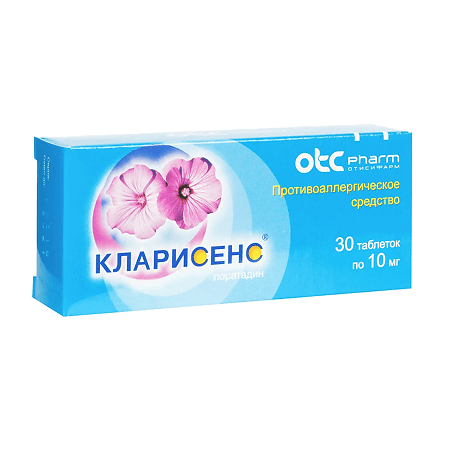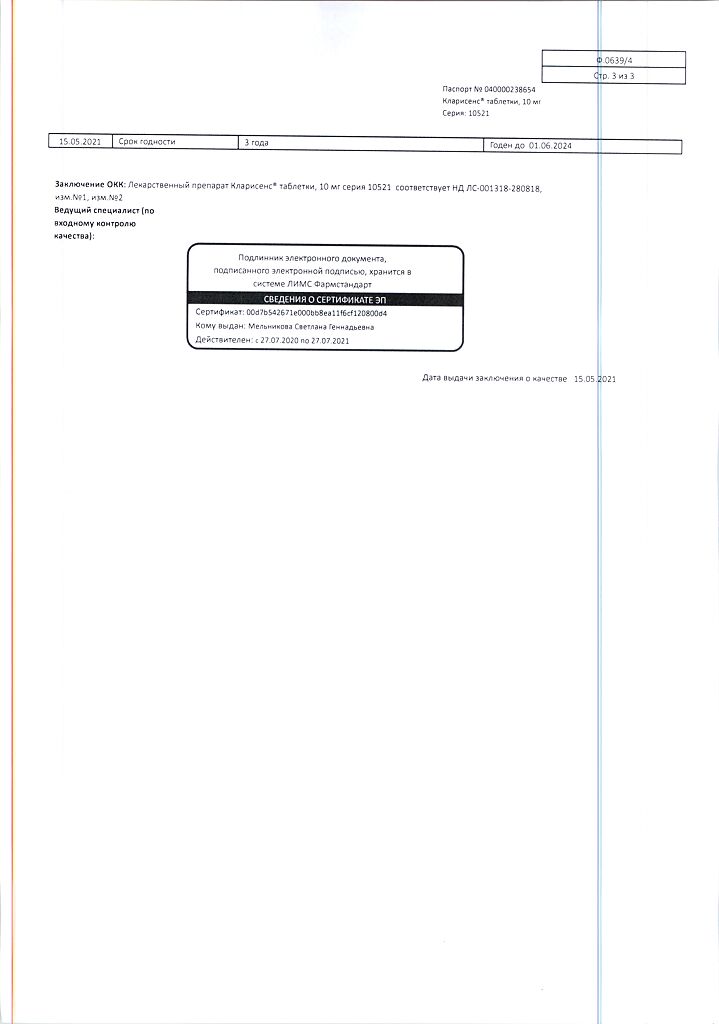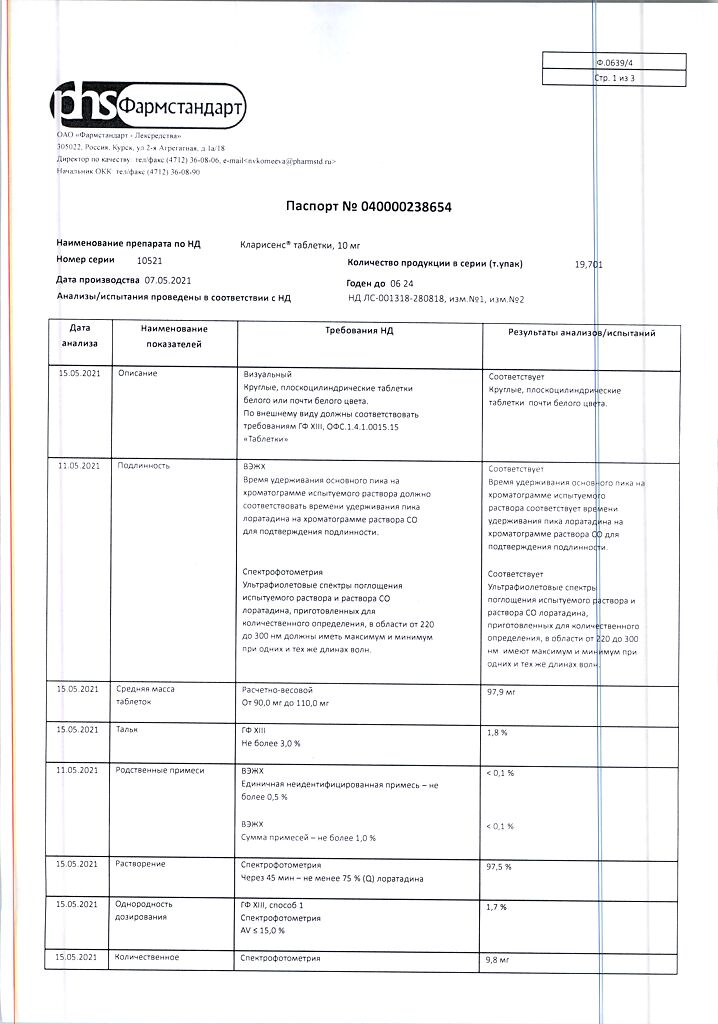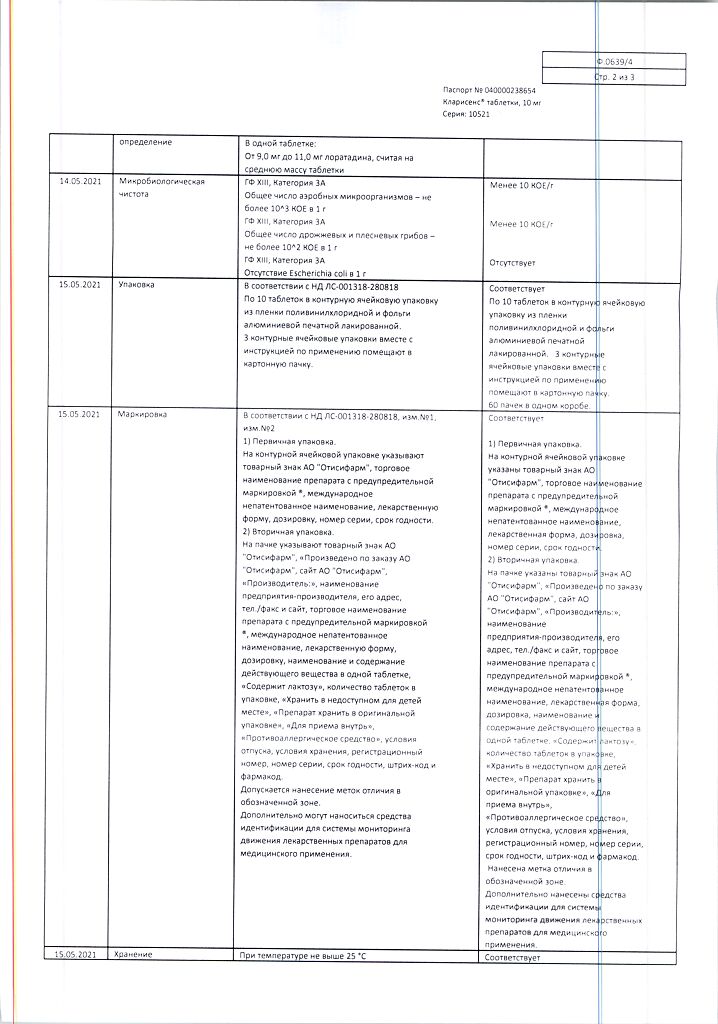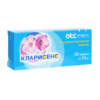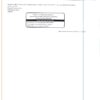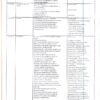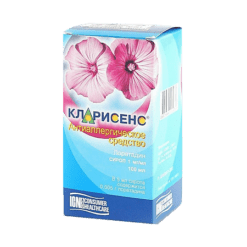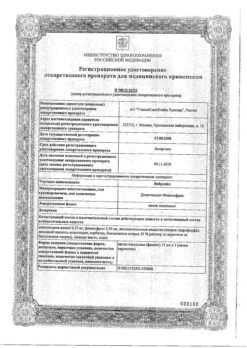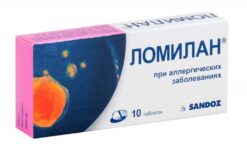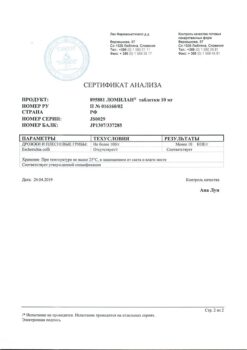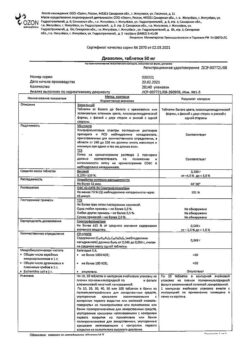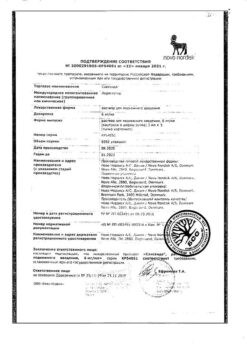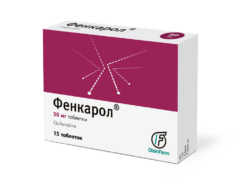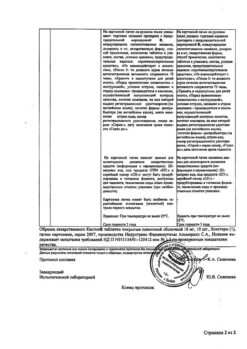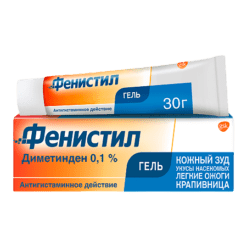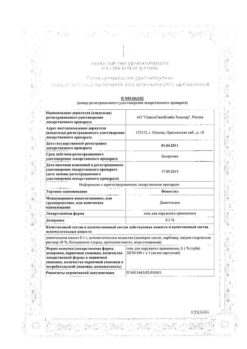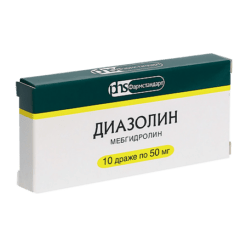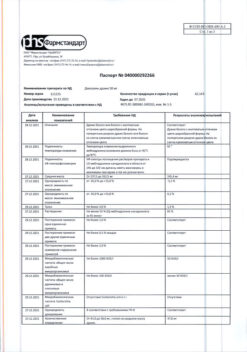No products in the cart.
Description
Pharmacotherapeutic group:
Antiallergic agent – H1-histamine receptor blocker.
ATC code: R06AX13
Pharmacodynamics.
The active substance of the drug – loratadine belongs to the group of competitive histamine antagonists, selectively blocks peripheral H1-histamine receptors. Loratadine affects histamine-dependent stage of allergic reactions, also reduces migration of eosinophils, limits release of inflammatory mediators at cellular stage of allergic reaction.
It prevents the development and facilitates the course of allergic reactions, has antiexudative, antipruritic action, practically has no anticholinergic and antiserotonin action. It does not penetrate through the blood-brain barrier, does not affect the central nervous system and is not addictive. Antiallergic effect develops after 30 minutes and lasts for 24 hours.
Pharmacokinetics.
Quickly and completely absorbed in the gastrointestinal tract. Time to reach maximum concentration is 1.3-2.5 h; eating slows it down by 1 h. Maximum concentration in the elderly increases by 50%, with alcoholic liver damage in accordance with increasing severity of the disease.
The binding to plasma proteins is 97%. Metabolized in the liver with the formation of the active metabolite descarboxyloratadine with the participation of cytochrome P450 isoenzymes CYP3A4 and to a lesser extent CYP2D6. Equilibrium plasma concentrations of loratadine and metabolite are reached on day 5 of administration. It does not penetrate through the blood-brain barrier.
The elimination half-life of loratadine is 3-20 h (mean 8.4), the active metabolite is 8.8-92 h (mean 28 h); in elderly patients 6.7-37 h (mean 18.2 h) and 11-38 h (17.5 h) respectively. In alcoholic liver damage the half-life increases with increasing severity of the disease.
Extracted by the kidneys and with bile. In patients with chronic renal insufficiency and during hemodialysis the pharmacokinetics is practically unchanged.
Indications
Indications
Active ingredient
Active ingredient
Composition
Composition
How to take, the dosage
How to take, the dosage
Interaction
Interaction
Special Instructions
Special Instructions
During treatment, caution should be exercised when driving motor vehicles and engaging in other potentially dangerous activities that require increased concentration and quick psychomotor reactions.
Contraindications
Contraindications
Side effects
Side effects
Overdose
Overdose
Symptoms: drowsiness, tachycardia, headache. In case of overdose seek medical attention.
Treatment: induction of vomiting, gastric lavage, intake of activated charcoal.
.
Pregnancy use
Pregnancy use
The use of the drug Clarisens during pregnancy is possible only if the expected benefits to the mother exceed the potential risk to the fetus.
Clarisens is excreted with the breast milk, so if the drug is prescribed during lactation, it is necessary to consider stopping breastfeeding.
Similarities
Similarities
Additional information
| Shelf life | 2 years |
|---|---|
| Conditions of storage | In a dry, light-protected place at a temperature not exceeding 25 °C |
| Manufacturer | Pharmstandard-Leksredstva, Russia |
| Medication form | pills |
| Brand | Pharmstandard-Leksredstva |
Other forms…
Related products
Buy Clarisens, tablets 10 mg 30 pcs with delivery to USA, UK, Europe and over 120 other countries.

